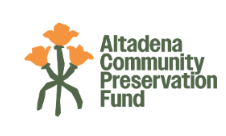Stopgap or Systems Change? The Role of Funders in Disaster Response
- FORWARD Platform

- Aug 20
- 3 min read

Why Philanthropy Is Emerging as a Key Player in Disaster Relief
When disaster strikes, communities by default look to the government for help. But as climate-fueled crises grow in scale and frequency across the U.S. (and globally)—from wildfires to floods to extreme heat—the reality in practice tells a different story.
It’s not always government that deploys support first. It’s oftentimes philanthropy.
Foundations and donor collaboratives are increasingly becoming the new first responders—moving quickly, filling critical gaps, and doing what government systems, burdened by complexity and delay, too often can’t: meeting people’s immediate needs with urgency, dignity, and flexibility.
But philanthropy’s role can’t stop at emergency relief. To truly shift outcomes, it must also help rebuild and reimagine the public infrastructure it now supports.
The Scale of the Crisis: Climate Disasters Are Growing
The January 2025 wildfires in Los Angeles County—including the Eaton and Palisades fires—have been devastating. These fires claimed 29 lives, destroyed over 16,000 structures, and displaced more than 100,000 residents. Insured property losses are estimated between $28 billion and $35 billion, making this one of the most destructive fire events in state history.
And yet, the timeline for federal aid tells a familiar story: 20-month delays before long-term housing assistance is deployed through programs like CDBG-DR. In past disasters, FEMA’s systems have been so overwhelmed that half of assistance calls went unanswered, exposing deep cracks in our national safety net.
How Philanthropy Is Filling the Gaps—and Pushing Innovation
At FORWARD, we’re working with funders who are no longer willing to wait.
 |  |  |
Dena Care Collective | Altadena Preservation Fund | LAUSD Education Foundation Fire Relief |
We’ve combined forces with non-profit policy driver, End Poverty in California (EPIC), we’re delivering direct cash assistance and case management to Altadena residents impacted by the Eaton Fire. | This multi-stakeholder partnership effort provides immediate housing support to displaced homeowners, ensuring they can rebuild and remain in their community. | This $3 million initiative is helping families with up to $1,700 in emergency aid so students can stay safe, housed, and in school. |
These aren’t just stopgap measures. They’re agile, equity-centered programs that provide a glimpse into what a reimagined public response could look like.
From Band-Aid to Blueprint: Philanthropy as a Public Innovation Lab
Philanthropy cannot—and should not—replace government. But what it can do is act as an innovation lab in support of the public sector, piloting more responsive approaches and investing in the infrastructure that makes them possible.
Imagine if:
Application portals were designed to be multilingual, mobile-first, and accessible to all
Verification systems were built to reduce paperwork and prevent fraud, not increase it
Aid was disbursed in days, not months—without compromising compliance
Community-based organizations were baked into service delivery, not added after the fact
These innovations are available today with FORWARD. They are built upon the principles behind many philanthropic programs operating today and serve as the blueprint for a modernized, people-first public aid system.

Systems Change Starts with Strategic Philanthropy
For systems change to take root, funders must go beyond gap-filling. That means:
Investing in the digital infrastructure needed to deliver aid at scale and with accountability
Co-designing programs with public agencies to test and scale new delivery models
Funding capacity-building for local governments and nonprofits alike
Elevating data and stories from relief efforts to shape policy and unlock public investment
This moment calls for more than generosity. It calls for vision, infrastructure, and strategic partnership.
What’s Next for Philanthropy in Disaster Recovery?
The Eaton Fire isn’t the first crisis—and it won’t be the last. But it is a wake-up call: philanthropy can’t just respond faster than government. It has the opportunity—and responsibility—to help reshape how government responds in the first place.
Philanthropy isn’t just filling gaps anymore. It’s laying the groundwork for the next generation of public service delivery.
Stay Ahead of the Curve
Want to fund smarter, faster, and with greater impact? Stay informed with strategies and stories from funders who are leading the way.
.png)


